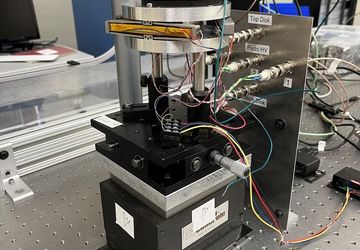Experimental Particle Physics

Understanding the fundamental forces and particles of the universe. Electroweak symmetry breaking, heavy flavor physics, searches for physics beyond the Standard Model, matter/antimatter asymmetry, dark matter, single-photon detection, neutrino properties, dark energy, instrumentation and detector development.
At Stanford, studies of the fundamental interactions and the elementary particles are enhanced by close collaboration between the Physics Department and the SLAC National Accelerator Center. The Cryogenic Dark Matter Search (CDMS) and the LUX-ZEPLIN Experiment (LZ) focus on the development and operation of new detector technologies to increase the sensitivity of searches for weakly interacting massive particles. The goal of the Enriched Xenon Experiment (EXO) is to detect "neutrinoless double-beta decay" using large amounts of xenon enriched in the isotope 136. The MINOS Experiment is a long-baseline neutrino experiment designed to observe the phenomenon of neutrino oscillations, an effect that is related to neutrino mass. The BABAR data set provides opportunities for studying matter/antimatter asymmetries (CP violation) and heavy flavor physics. The ATLAS experiment at the Large Hadron Collider is designed to studey TeV-scale physics, including the recently discovered Higgs Boson, collider dark matter signatures and the physics of and beyond the Standard Model. Opportunities also exist in advanced accelerator physics and in the study of gravity (e.g., LIGO, testing gravity at short distances).
Related Faculty
Related News

Part of an experimental setup being built at Stanford University that will measure gravity down to submicron scales using nuclear spectroscopy. Courtesy Giorgio...
Source: Simons Foundation, Gordon and Betty Moore Foundation
Physics breakthroughs don’t…

Since the 1960s there has been plenty of evidence to support the existence of dark matter…

Source: Symmetry Magazine
Stanford PhD candidate Jannicke Pearkes spends a lot of her…

Physicist Kent Irwin (first image,far left) and colleagues work with a delicate wire coil called an inductor for a prototype of Dark Matter Radio, their radio...
Source: Science Magazine
Kent Irwin has a vision: He aims to build a…






